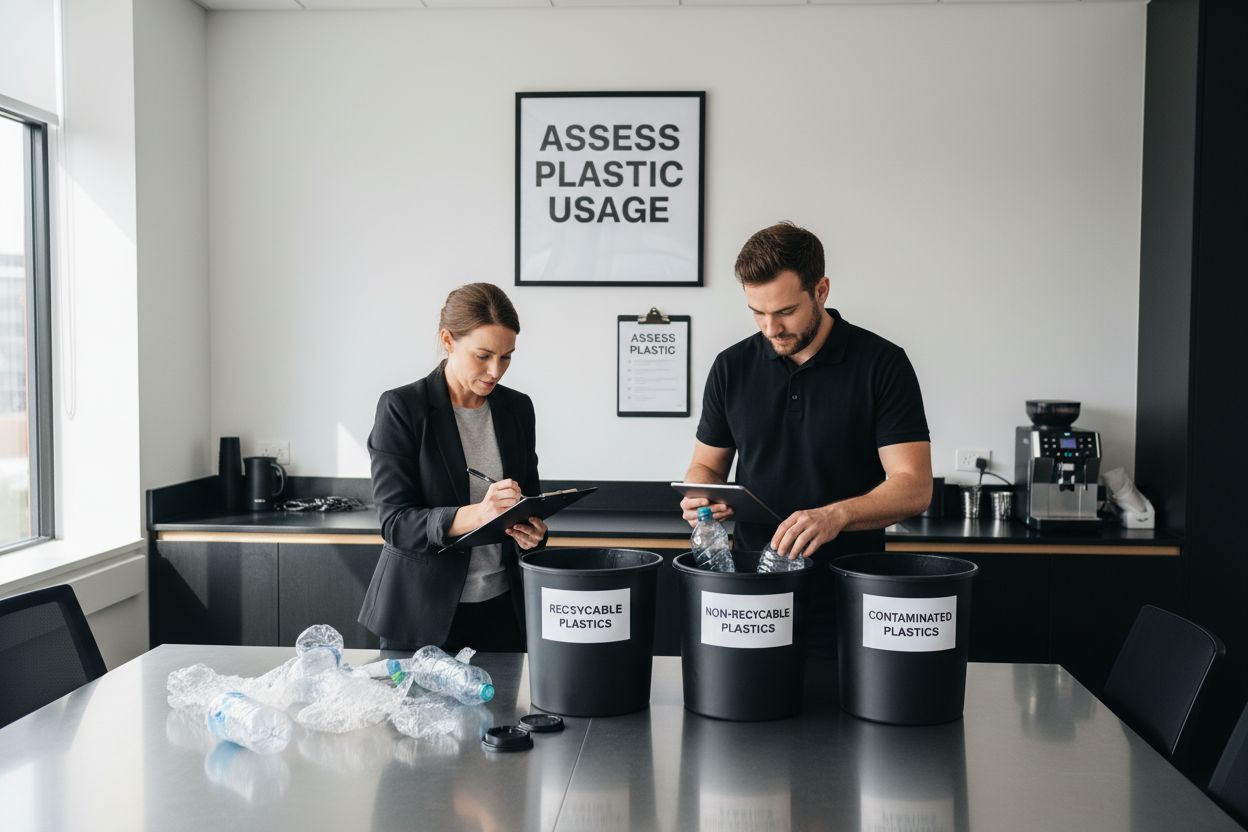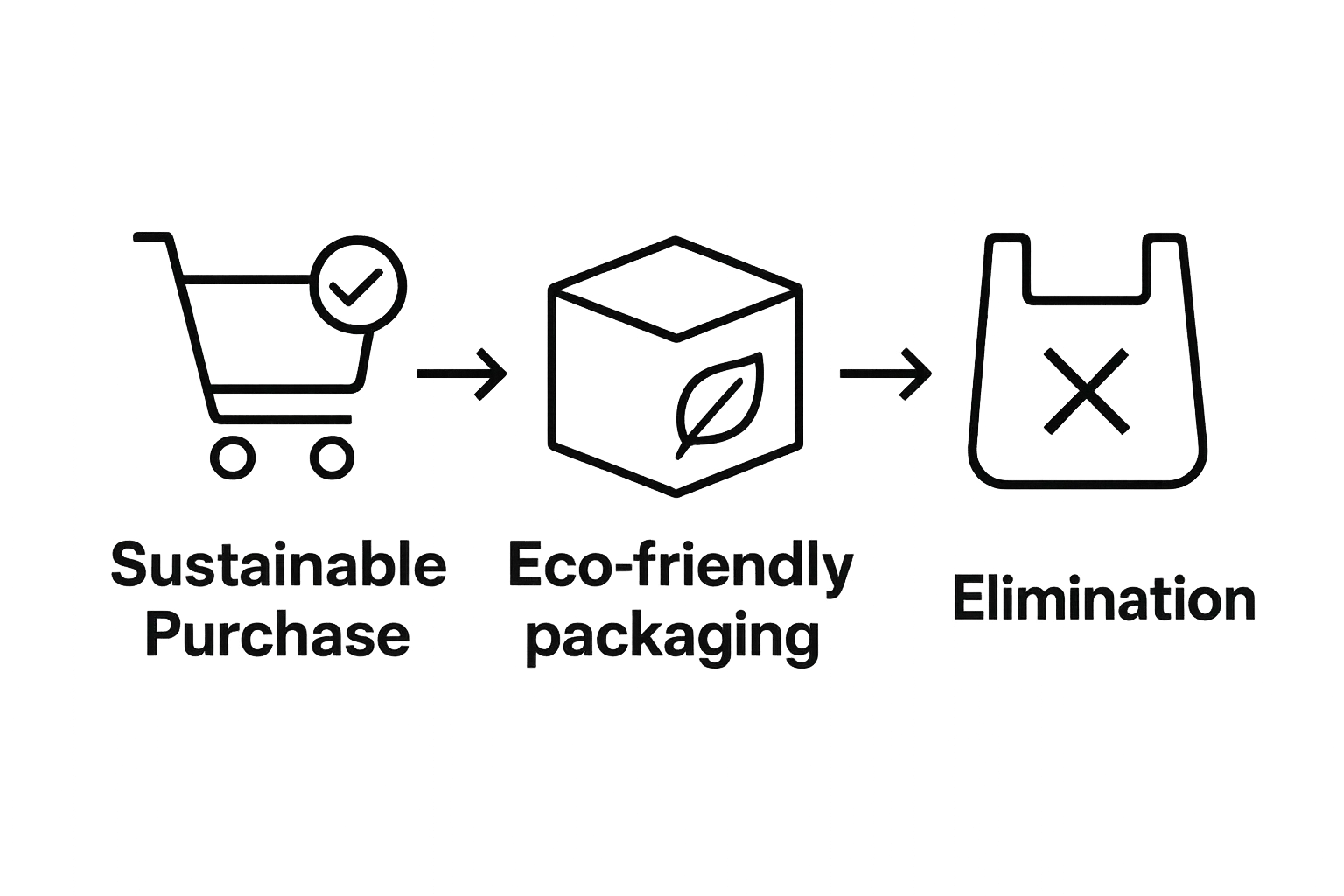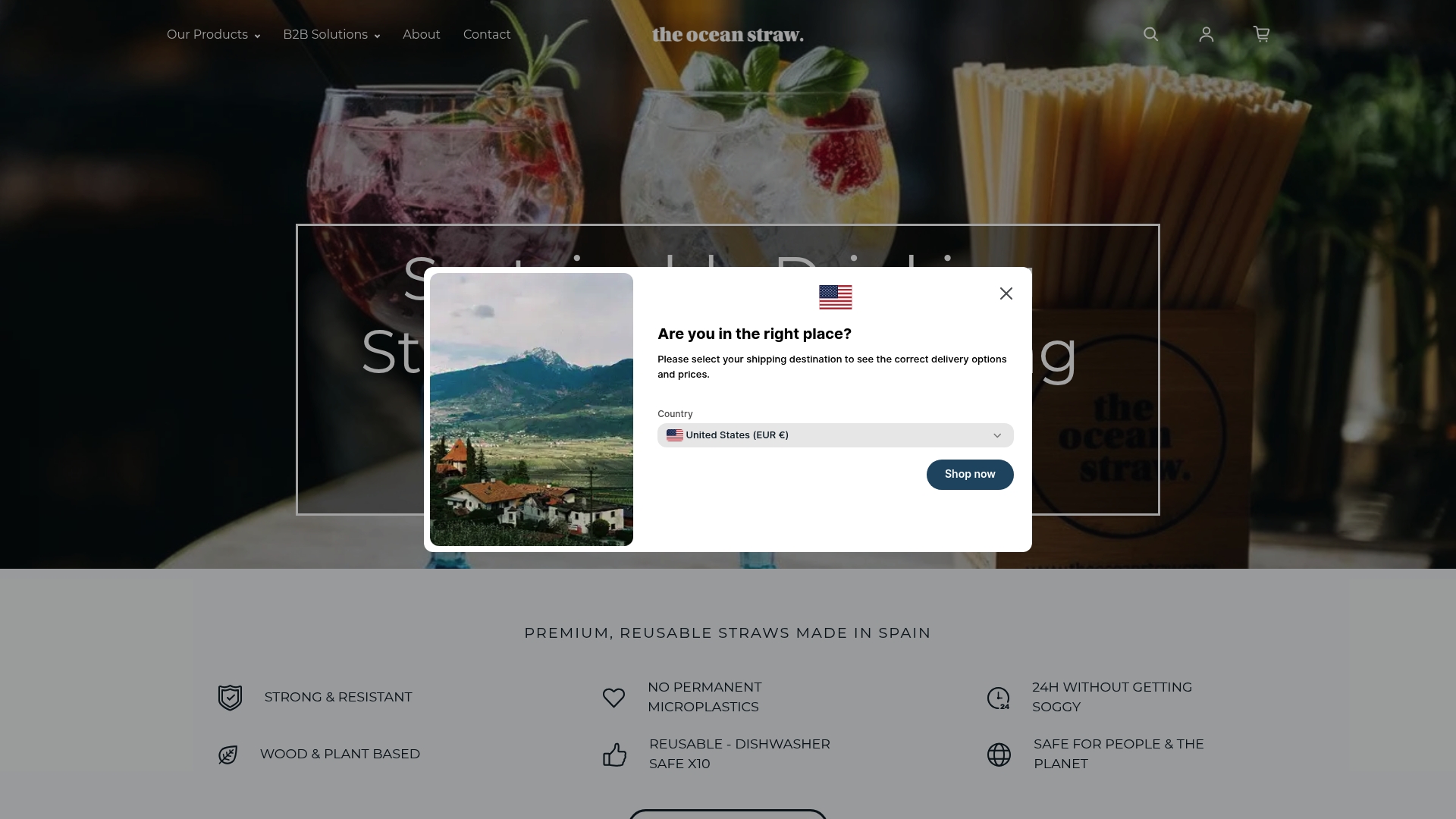How to Reduce Plastic Pollution in the Ocean Sustainably

Plastic pollution in the ocean keeps rising, with up to 12 million tons dumped every year. Most people expect ocean waste to be something that happens far from daily life, far from their business or workplace. Turns out, the biggest step to stopping this mess starts with tracking your own plastic footprint and making a few smart swaps right where you are.
Table of Contents
- Step 1: Assess Current Plastic Usage And Sources
- Step 2: Implement Sustainable Purchasing Policies
- Step 3: Educate Staff And Guests On Plastic Reduction
- Step 4: Optimize Waste Management And Recycling Processes
- Step 5: Monitor And Evaluate Plastic Reduction Impact
Quick Summary
| Key Point | Explanation |
|---|---|
| 1. Map your plastic usage | Document every plastic item in your organization for targeted reduction strategies. |
| 2. Establish sustainable procurement policies | Prioritize vendors committed to reducing plastic waste in purchasing decisions. |
| 3. Educate staff on sustainability | Implement training programs to engage and inform about the importance of plastic reduction. |
| 4. Optimize waste management systems | Create effective waste segregation and recycling processes to minimize plastic disposal. |
| 5. Monitor impacts regularly | Develop a tracking system to evaluate progress and adapt strategies for ongoing improvement. |
Step 1: Assess Current Plastic Usage and Sources
Reducing plastic pollution in the ocean starts with understanding your current plastic consumption patterns. This critical first step involves a comprehensive evaluation of where and how plastic enters your operational environment. By conducting a thorough assessment, you’ll create a targeted strategy to minimize plastic waste before it reaches marine ecosystems.
Understanding Your Plastic Footprint
Begin by mapping out every plastic touchpoint within your organization. This means carefully tracking single use plastics from procurement to disposal. Walk through each department documenting plastic items like packaging materials, disposable utensils, containers, and administrative supplies. Create a detailed inventory that categorizes plastic items by type, usage frequency, and potential alternatives.
Consider performing a systematic waste audit. This involves collecting and weighing different plastic materials over a specific period, typically one week or one month. Document the origin of each plastic item, its lifecycle, and potential disposal route. Pay special attention to items that might eventually reach waterways or ocean environments. Learn more about preventing plastic pollution naturally through comprehensive tracking and strategic reduction.
Analyzing Plastic Flow and Potential Interventions
Once you’ve completed your initial assessment, analyze the data to identify primary sources of plastic waste. Look for patterns such as repeated single use items, unnecessary packaging, or inefficient disposal processes. Recognize that some plastic usage might seem unavoidable initially, but creative solutions often emerge through careful examination.
Successful assessment requires honest documentation and a commitment to transparency. Your goal is not immediate perfection but continuous improvement. By understanding your current plastic consumption, you’ll develop targeted strategies to reduce ocean plastic pollution systematically and effectively. Verification of this step involves a comprehensive report detailing plastic sources, quantities, and initial recommendations for reduction.
Remember, reducing plastic pollution is a journey of incremental changes and persistent commitment.
Step 2: Implement Sustainable Purchasing Policies
Transitioning from plastic consumption assessment to active reduction requires strategic purchasing policies that prioritize ocean conservation. This critical step transforms your organization’s approach to procurement, ensuring every purchasing decision minimizes potential plastic pollution and supports sustainable practices.
Developing Comprehensive Procurement Guidelines
Craft detailed purchasing guidelines that explicitly mandate sustainability as a primary selection criterion for vendors and products. Focus on identifying suppliers who demonstrate genuine commitment to reducing plastic waste. This means evaluating potential partners not just on price and quality, but on their environmental practices, packaging strategies, and waste management protocols.
According to United Nations Environment Programme, sustainable procurement involves selecting products and services that minimize environmental impact throughout their lifecycle. Implement a scoring system that ranks suppliers based on their plastic reduction efforts, packaging innovation, and commitment to circular economy principles.

Practical Policy Implementation Strategies
Transition your procurement approach by establishing clear, measurable standards for plastic usage. This might involve setting progressive reduction targets, requiring suppliers to use minimal or compostable packaging, and prioritizing products designed for reuse or easy recycling. Develop a comprehensive vendor evaluation matrix that includes specific plastic reduction metrics, such as percentage of recycled content, packaging weight, and waste generation.
Encourage internal stakeholders to view sustainable purchasing as a strategic advantage rather than an additional cost. Training procurement teams to understand the long term environmental and economic benefits of reducing plastic waste will drive meaningful change. Create incentive structures that reward departments and individuals who successfully implement plastic reduction strategies.
Verification of this step includes a documented procurement policy, a supplier evaluation framework, and initial baseline measurements of plastic reduction achievements. By systematically reimagining purchasing practices, your organization can significantly contribute to preventing plastic pollution and protecting marine ecosystems.
Step 3: Educate Staff and Guests on Plastic Reduction
Education serves as the cornerstone of meaningful environmental transformation. This critical step focuses on creating comprehensive awareness programs that inspire active participation in plastic reduction strategies across your entire organization and among your guests.
Building a Culture of Environmental Awareness
Develop engaging educational initiatives that transform plastic reduction from a technical requirement into a shared organizational mission. Create multilayered communication strategies that speak directly to different stakeholder groups. For staff members, this means designing targeted training sessions that not only explain the environmental consequences of plastic pollution but also empower them with practical alternatives and actionable strategies.
According to the United Nations Environment Programme, awareness campaigns play a crucial role in driving behavioral changes. Design interactive workshops, visual presentations, and hands on training modules that illustrate the direct connection between organizational practices and ocean ecosystem health.
Implementing Comprehensive Communication Strategies
Craft compelling narratives that demonstrate the tangible impact of plastic reduction efforts. Use visual storytelling techniques like infographics, short videos, and real world case studies to make complex environmental concepts accessible and engaging. Position your organization as a proactive leader in marine conservation by transparently sharing your plastic reduction journey, including challenges, achievements, and ongoing commitments.
Encourage staff and guests to become active participants by creating feedback mechanisms and recognition programs. Develop reward systems that celebrate individual and team contributions to plastic reduction goals. Implement digital and physical communication channels that continuously reinforce the importance of sustainable practices.
Verification of this step includes documented training materials, participant feedback surveys, and measurable shifts in organizational behavior.
 Successfully implemented education programs will transform plastic reduction from a policy requirement into a genuine, organization wide commitment to environmental stewardship.
Successfully implemented education programs will transform plastic reduction from a policy requirement into a genuine, organization wide commitment to environmental stewardship.
Step 4: Optimize Waste Management and Recycling Processes
Transforming waste management represents a critical intervention in preventing plastic pollution from reaching marine ecosystems. This step focuses on creating a comprehensive, strategic approach to capturing, sorting, and redirecting potential plastic waste before it can potentially enter waterways or ocean environments.
Designing Comprehensive Waste Segregation Systems
Establish a robust waste management infrastructure that prioritizes precise segregation at the source. Implement color coded waste collection stations that clearly distinguish between recyclable plastics, compostable materials, and general waste. Train staff to understand the nuanced differences in plastic types, ensuring each item is directed to the most appropriate processing stream. This means creating detailed visual guides and conducting hands on training that empowers employees to make informed sorting decisions.
According to the United States Environmental Protection Agency, effective waste reduction starts with meticulous sorting and strategic collection processes. Develop a waste tracking system that documents the volume and type of plastics processed, allowing for continuous improvement and identification of potential reduction opportunities.
Implementing Advanced Recycling Strategies
Go beyond traditional recycling approaches by exploring innovative waste management technologies and partnerships. Collaborate with specialized recycling facilities that can process complex plastic materials, ensuring maximum resource recovery. Investigate local and regional recycling networks that can transform waste into valuable secondary materials, supporting a circular economy model.
Create accountability mechanisms that regularly assess the effectiveness of your waste management processes. Conduct periodic waste audits that provide granular insights into plastic flow, identifying potential leakage points and opportunities for further optimization. Develop reporting systems that transparently communicate your organization’s waste management performance, demonstrating commitment to environmental stewardship.
Verification of this step includes a comprehensive waste management protocol, documented staff training records, detailed waste stream analysis reports, and measurable reductions in plastic waste generation. By systematically reimagining waste management, your organization can significantly minimize its potential contribution to ocean plastic pollution.
Step 5: Monitor and Evaluate Plastic Reduction Impact
Measuring the effectiveness of plastic reduction strategies transforms good intentions into demonstrable environmental progress. This crucial step involves creating a comprehensive monitoring framework that tracks, analyzes, and communicates your organization’s plastic pollution prevention efforts with precision and transparency.
Establishing Robust Measurement Frameworks
Develop a detailed tracking system that captures quantitative and qualitative data about your plastic reduction initiatives. This means creating sophisticated metrics that go beyond simple waste volume measurements. Design dashboards that capture nuanced indicators such as plastic type reduction, supplier sustainability scores, staff engagement levels, and estimated marine ecosystem impact.
According to the National Oceanic and Atmospheric Administration, comprehensive monitoring allows organizations to understand the broader implications of their waste reduction strategies. Implement quarterly assessment protocols that provide snapshots of progress and identify emerging trends or potential improvement areas.
Creating Continuous Improvement Mechanisms
Transform monitoring from a passive reporting exercise into an active strategy development tool. Conduct regular review sessions where leadership teams analyze collected data, discuss challenges, and collaboratively develop adaptive strategies. Establish a feedback loop that connects measurement insights directly to operational adjustments.
Encourage cross functional collaboration by making monitoring results transparent and accessible across different departments. Create visual representation tools like interactive dashboards, infographics, and periodic reports that communicate complex data in engaging, understandable formats. This approach not only tracks progress but also maintains organizational momentum and commitment to plastic reduction goals.
Verification of this step includes a comprehensive monitoring framework document, quarterly impact reports, data visualization tools, and a clear roadmap for continuous improvement.
Below is a summary table outlining key verification steps and criteria to ensure each plastic reduction strategy is successfully implemented and measurable.
| Step | Verification Criteria | Description |
|---|---|---|
| Assess Plastic Usage | Comprehensive report | Detailed inventory of plastic sources and initial reduction recommendations |
| Sustainable Purchasing | Procurement policy docs | Documented policies, supplier evaluation framework, and baseline reduction measurements |
| Educate Staff & Guests | Training records | Documented training materials, feedback surveys, and behavior change evidence |
| Waste Management | Waste management protocol | Up-to-date protocol, staff training records, and waste stream analysis reports |
| Monitoring Impact | Impact reports & framework | Monitoring framework, quarterly progress reports, and data visualization tools |
| By treating plastic reduction as an evolving, measurable process, your organization can drive meaningful environmental change while demonstrating tangible commitment to ocean conservation. |
Take Real Action Against Ocean Plastic – Start With Ocean Straw Solutions
You have learned how crucial it is to track plastic usage, adopt sustainable policies, and implement smarter waste management. Yet changing what you use in daily operations is often the biggest challenge. Single use plastics, especially straws, continue to flow into our oceans even as awareness grows. By switching to compostable, wood, and plant based alternatives, you can instantly reduce ocean pollution and show true commitment to sustainability. Explore our specialized The Ocean Straw Growth Pack bundles, designed for businesses in the HoreCa market aiming to make a genuine difference.

Why wait when every day counts in saving our oceans? Visit theoceanstraw.com to discover the most sustainable straws available. Equip your business with solutions that support the reduction strategies outlined in this guide and join a growing movement for cleaner seas. Take the first step now towards a plastic free future. See the full range at The Ocean Straw Growth Pack and let your business lead by example.
Frequently Asked Questions
How can I assess my organization’s current plastic usage?
Begin by mapping out every plastic touchpoint within your organization. Create a detailed inventory categorizing plastic items by type, usage frequency, and potential alternatives. Conduct a systematic waste audit to document the origin, lifecycle, and disposal routes of the plastic items.
What are sustainable purchasing policies, and how can they help reduce plastic usage?
Sustainable purchasing policies prioritize vendors and products that minimize environmental impact, particularly regarding plastic waste. By establishing guidelines that focus on suppliers’ commitment to sustainability, organizations can significantly reduce their plastic footprint through responsible procurement practices.
How can I educate my staff and guests about plastic reduction?
Create engaging educational initiatives, including targeted training sessions and awareness campaigns, that explain the consequences of plastic pollution. Utilize interactive workshops and visual storytelling to empower participants with practical strategies and alternatives for reducing plastic usage.
What waste management strategies can help minimize plastic pollution?
Implement comprehensive waste segregation systems to ensure proper sorting of recyclable plastics and compostable materials. Explore advanced recycling technologies and collaborate with specialized facilities to maximize resource recovery while conducting regular audits to track and optimize waste management practices.